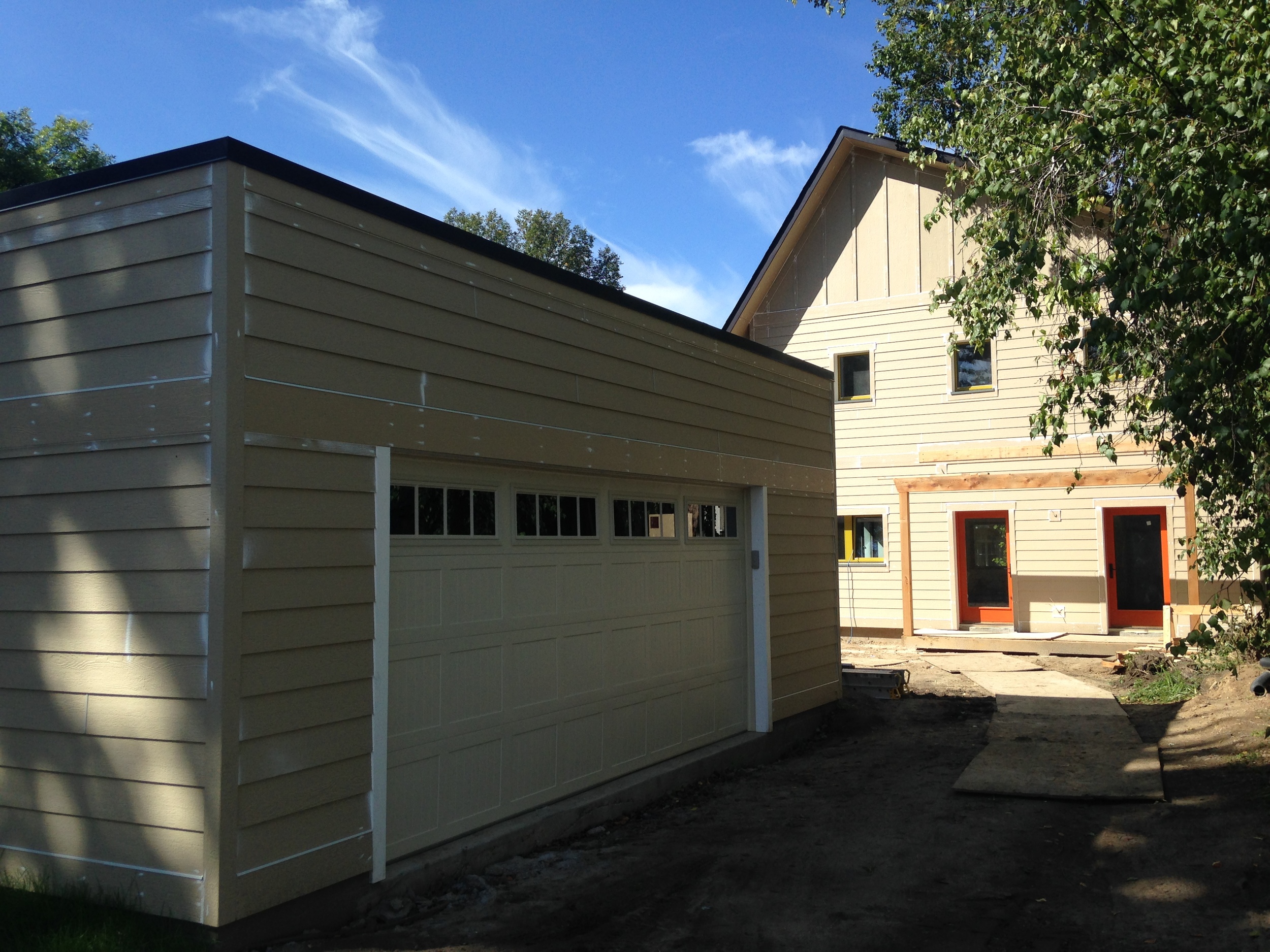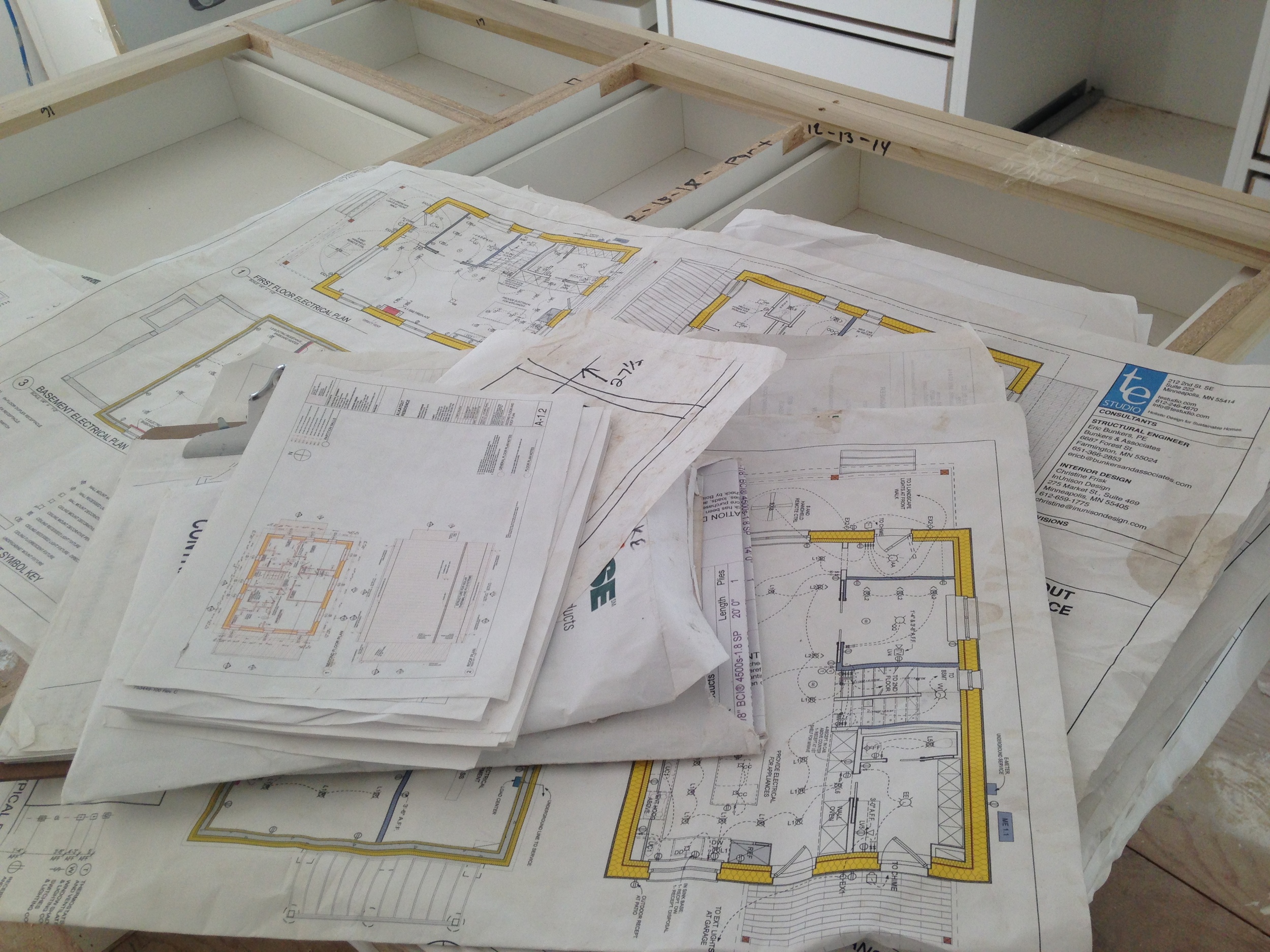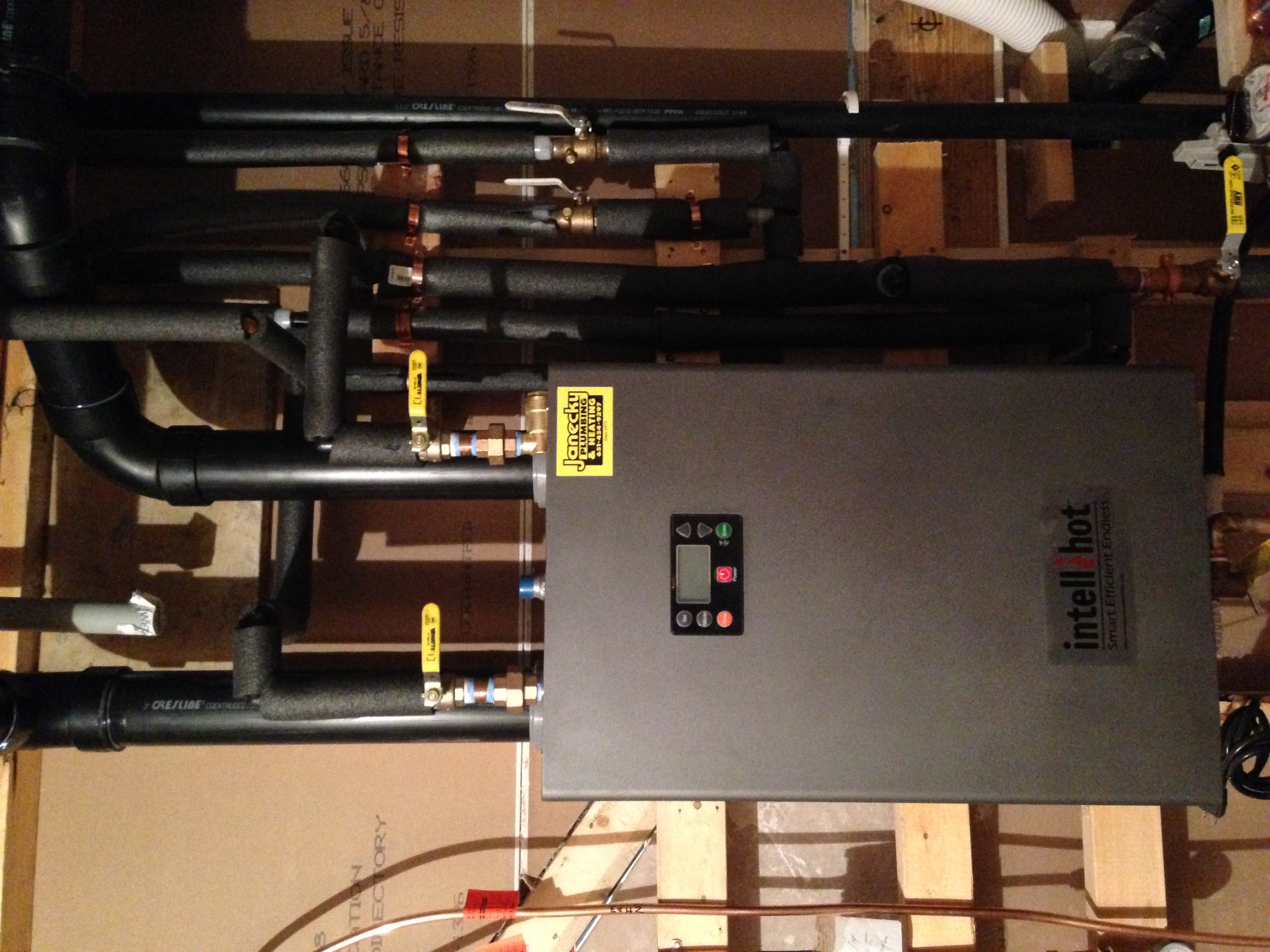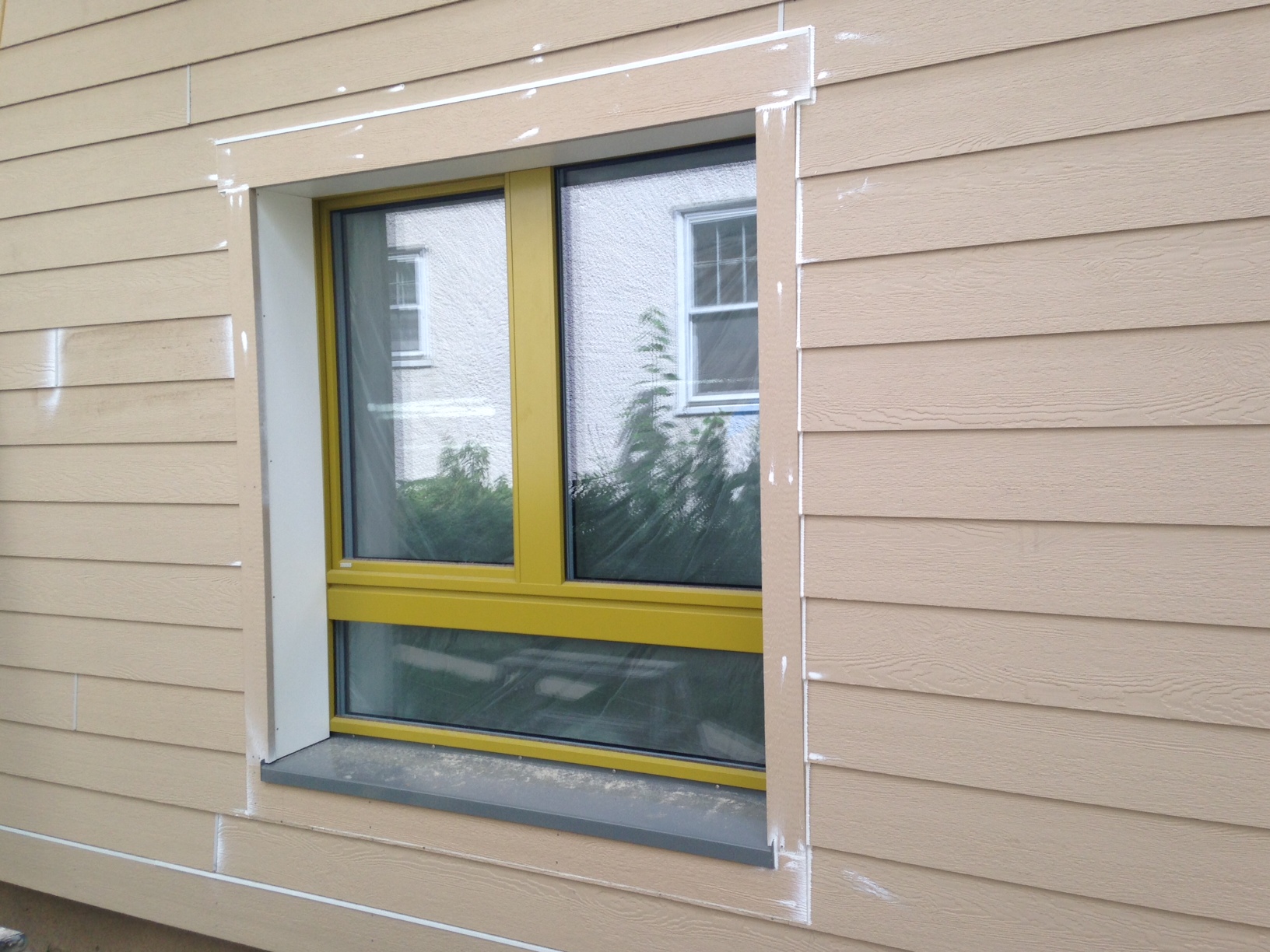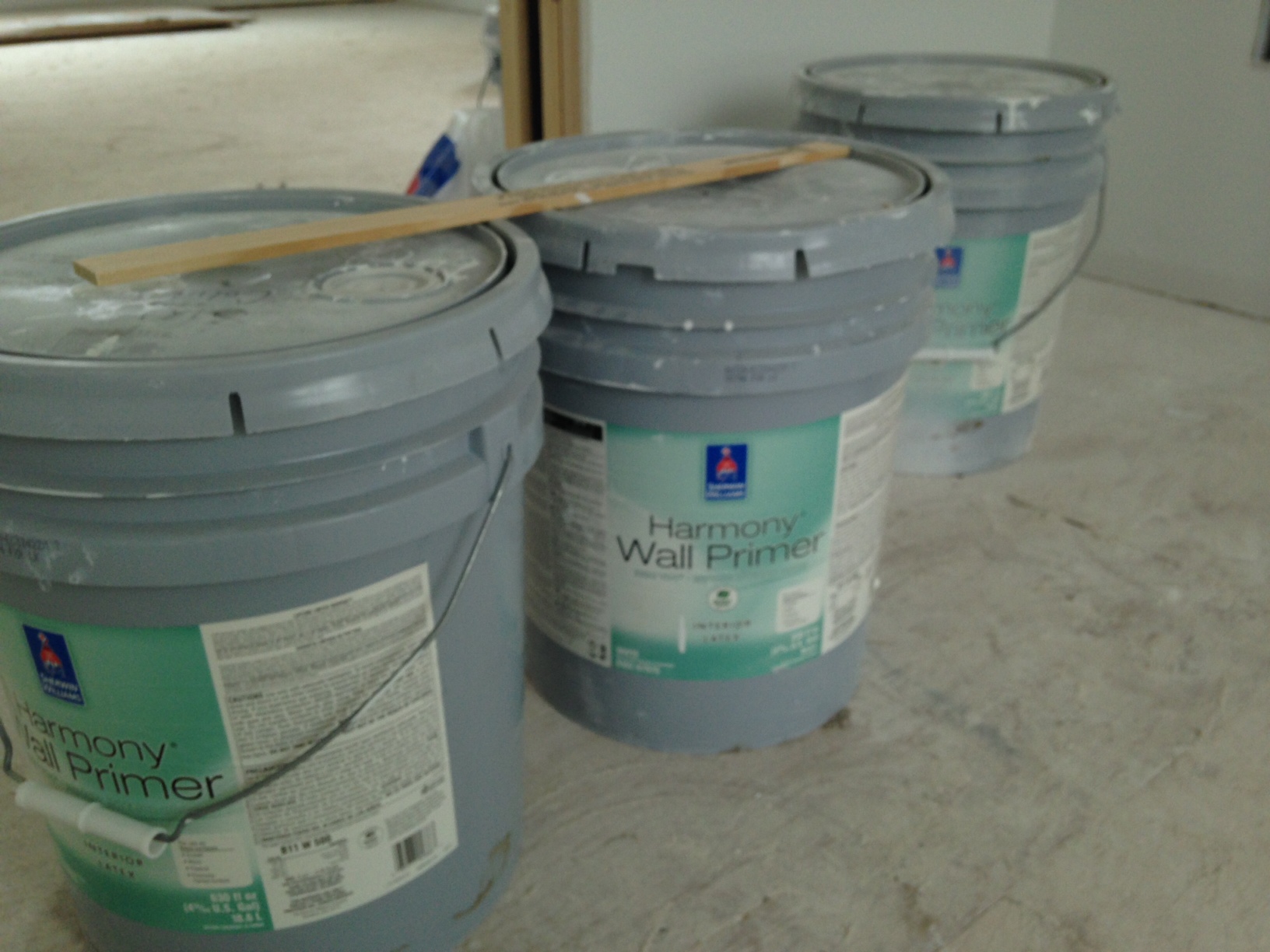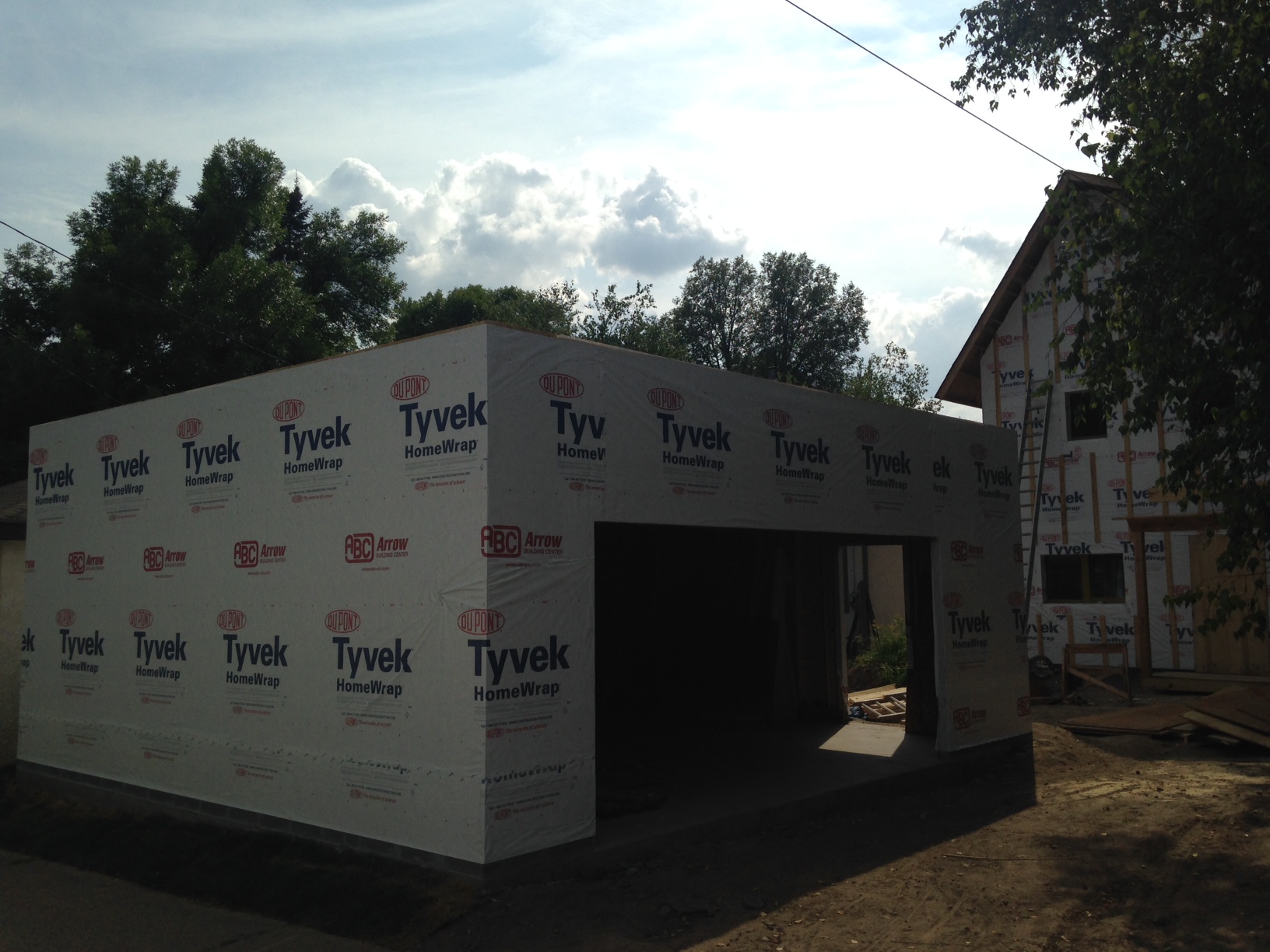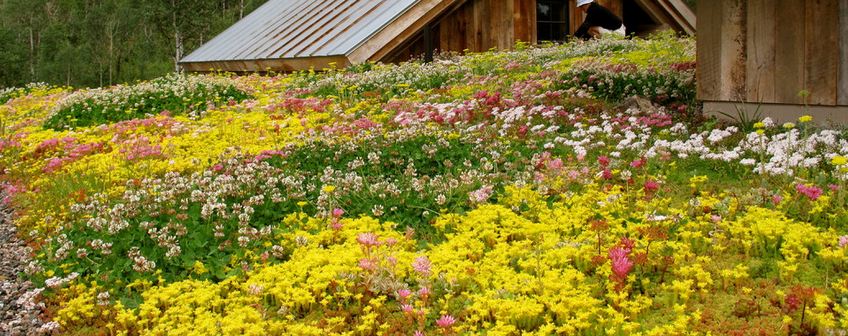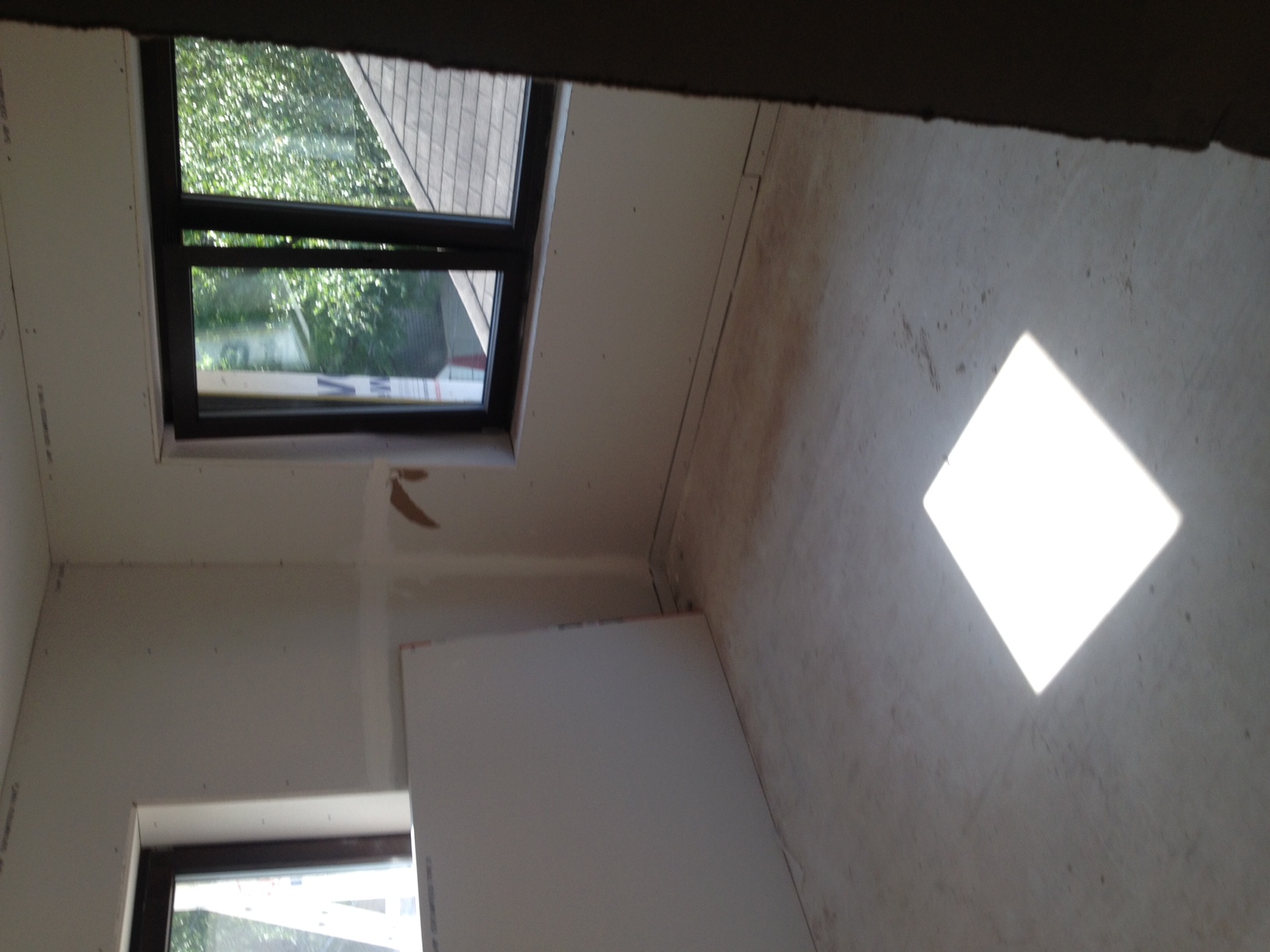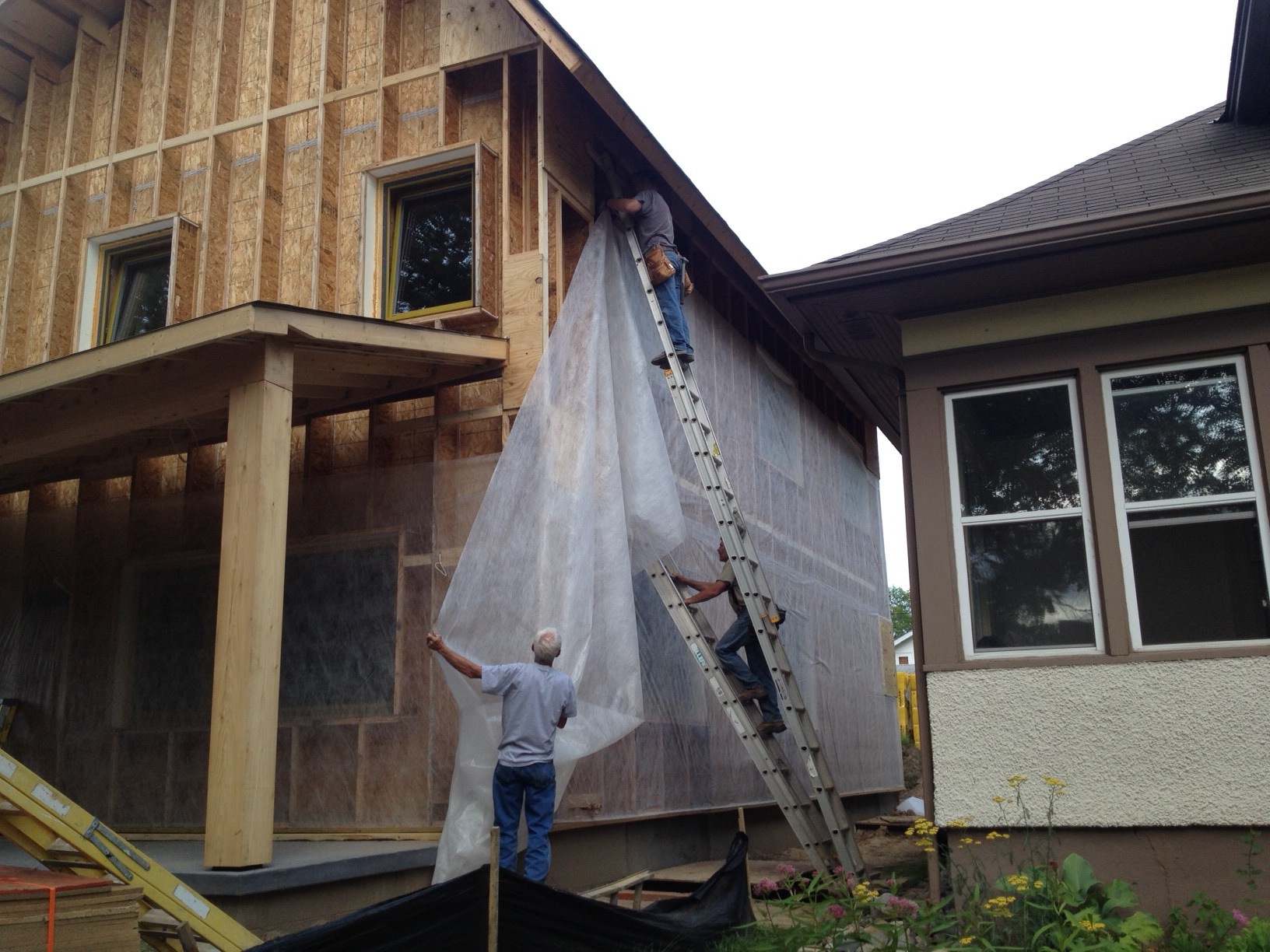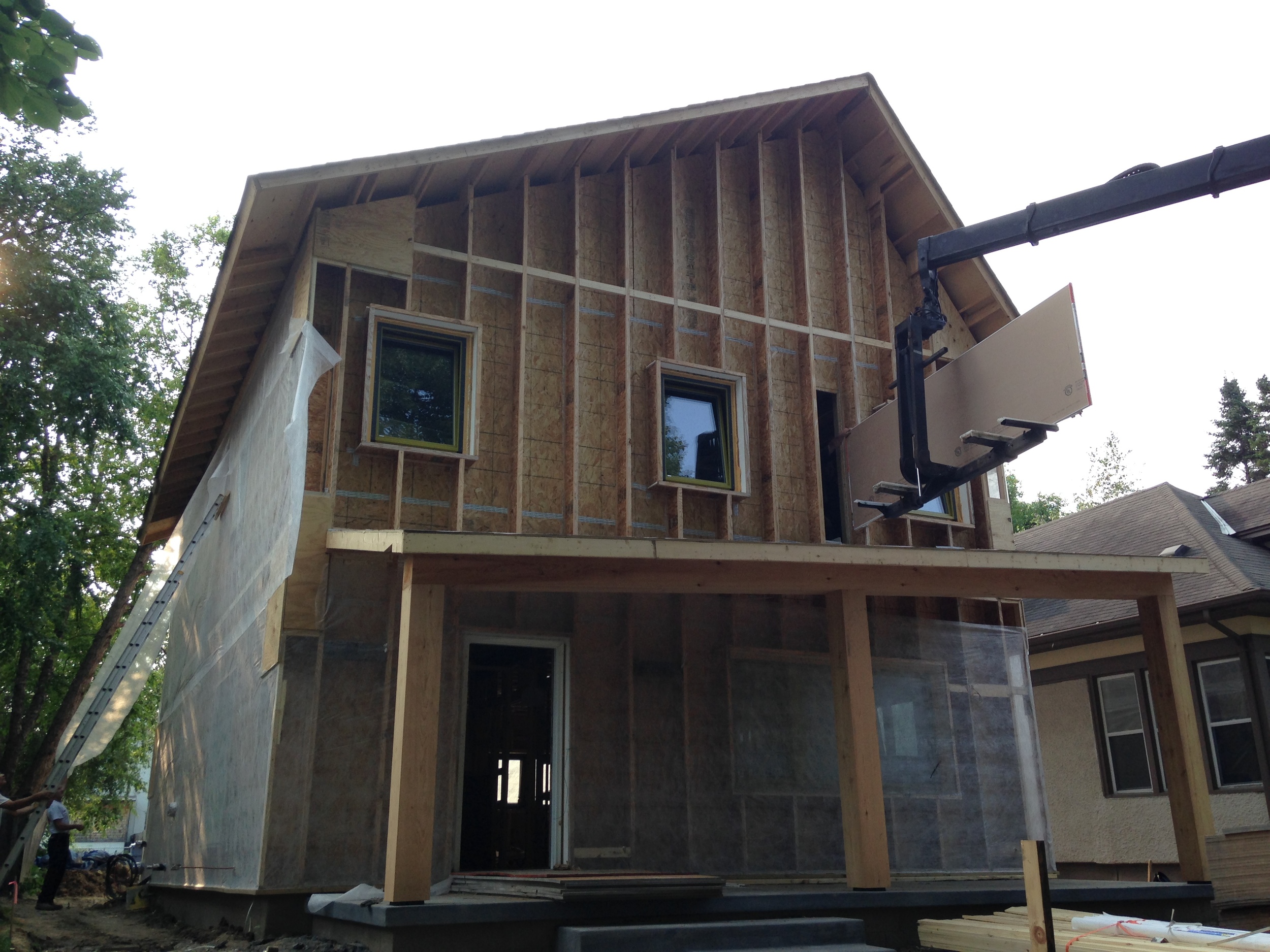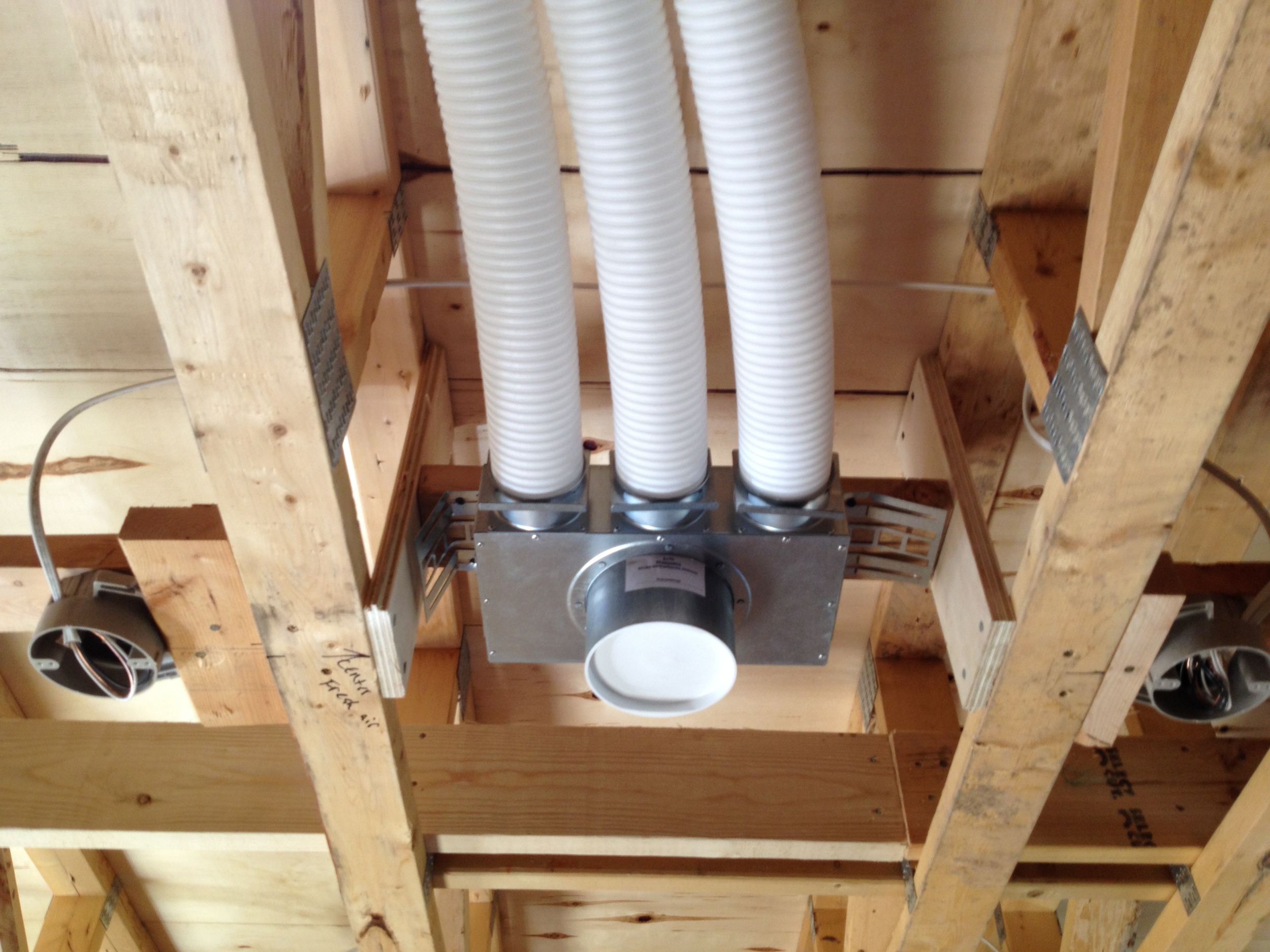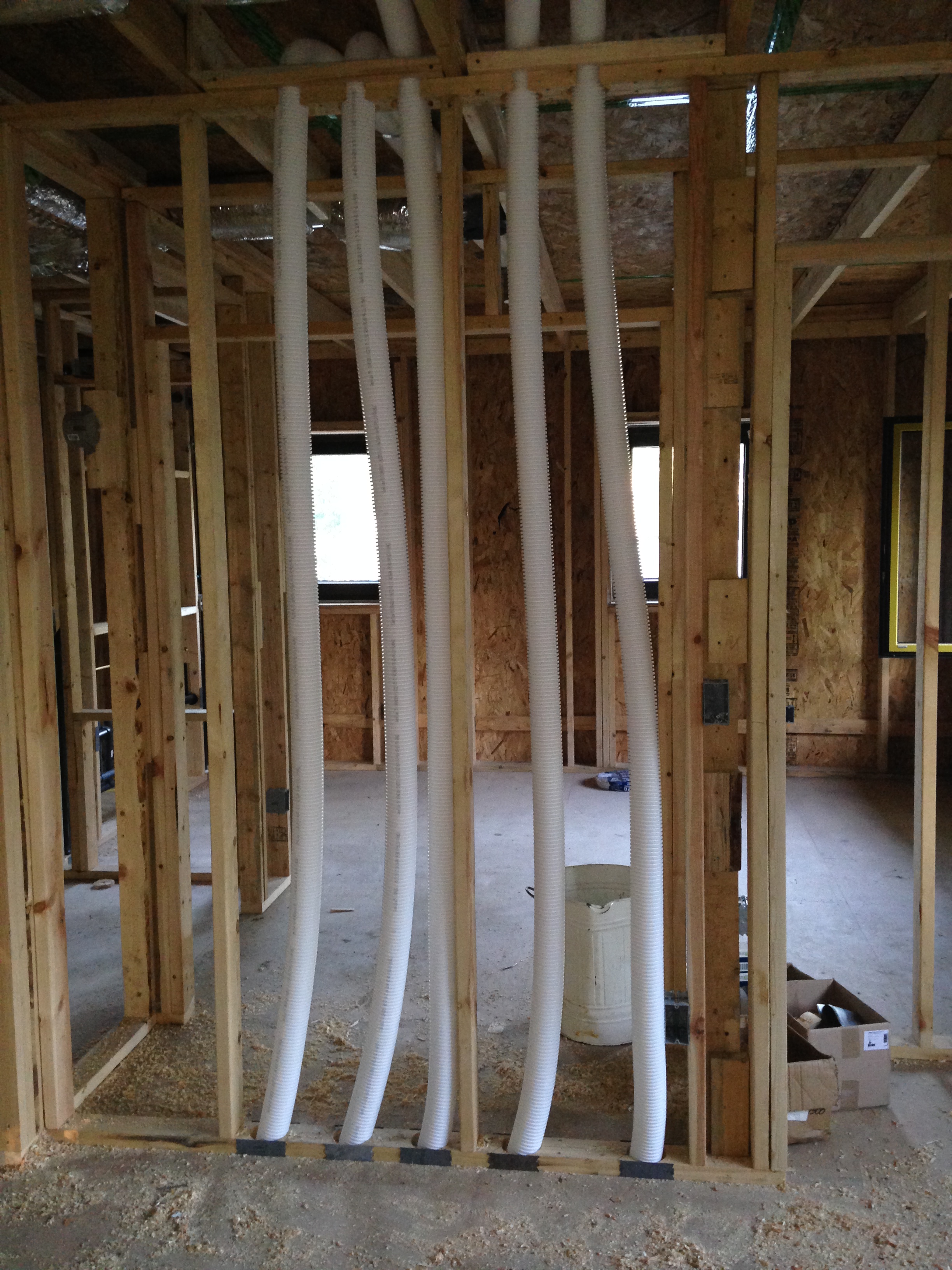Cool outside, comfortable inside
There were several items checked off the long 'to do' list this week. Among them include: all the siding installed and ready for paint, some kitchen and bathroom cabinets installed, kitchen and bathroom sinks ordered, garage door installed, steel cap on garage roof installed, mudroom and bathroom floors prepared for tile, kids' bathroom floor tile down, master bath shower water-proofed and ready for tile, drywall and taping done in the basement, hardwood flooring delivered, bedrooms measured for carpet, plumbing for the tankless water heater finished, and the house is now connected to Minneapolis city water! Phew.
Cooler fall weather kicked in this week, and we had our first glimpse of how the solar passive house behaves. It was chilly on Wednesday and Ryan closed all the windows in the morning. When we entered the house in the evening, we went from the cool outdoor air into a comfortably warm environment inside the house. Considering the house is still not connected to electricity or gas, we were enjoying heat from the sun, retained by the super-insulated walls and air-tight construction. This is so cool, or as our 8-year-old would say, this is epic!
